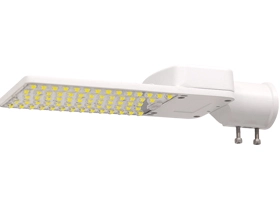The Selection and Use of SMD LED Modules
Nowadays, SMD LED modules are widely used in our daily lives due to their high efficiency, environmental friendliness, and energy-saving characteristics, making them highly popular. Compared to traditional through-hole LEDs, SMD LED modules are favored for their compact size and diverse product range. Whether it's low-power indicators or medium and high-power lighting devices, SMD LED modules can meet various application needs. For example, side-emitting SMD LEDs provide soft backlighting for display devices, while top-emitting SMD LEDs bring more possibilities for decorative lighting with their uniform light distribution.
SMD LED Module Selection Guide
When selecting SMD LED Modules , several key parameters need close attention, as these directly affect the LED module's performance and usage effects.
Brightness (Luminous Flux)
Brightness is one of the most critical parameters in selection. SMD LED modules are known for their high brightness and low power consumption, widely used in general lighting, household lighting, automotive lighting, and other fields. Depending on the application scenario, selecting the appropriate luminous flux ensures optimal lighting effects. For example, in LED screens and handheld devices, suitable brightness can enhance visual experience.
Color (Wavelength)
SMD LED modules offer a range of colors, including red, green, blue, yellow, and white. The color should be selected based on specific application needs. For example, high-brightness and pure color LED is required for digital displays, while suitable colors can be chosen for lighting equipment based on actual needs. The accuracy and saturation of colors directly affect the final product's effect.
Beam Angle
Beam angle measures the spread of light from SMD LED modules . In selection, the application's specific needs should be considered. For digital displays, a smaller beam angle is usually needed to ensure precise light projection. In lighting equipment, a larger beam angle can ensure uniform light coverage over a larger area and enhance the user experience.
SMD LED Module Performance and Parameters
Besides brightness, color, and beam angle, other electrical parameters are crucial in selecting SMD LED modules .
Working Voltage
Working voltage refers to the voltage required for normal operation. When selecting SMD LED modules , the appropriate working voltage should be chosen based on the application scenario. Low-voltage applications, such as handheld devices, require LEDs with a low working voltage to reduce power consumption, while high-voltage applications like automotive lighting need suitable high-voltage LEDs.
Working Current and Pad Size
Working current is a key factor affecting LED module performance, as excessive current may lead to LED overheating, reducing its lifespan. Additionally, pad size impacts the ease and stability of installation; a reasonable pad design can improve the reliability of LED modules.
In summary, choosing the right SMD LED module requires comprehensive consideration of various factors including brightness, color, beam angle, working voltage, and working current. By making informed selections, you can ensure the performance and lifespan of the SMD LED modules while achieving the best cost-performance ratio. In practical applications, it is recommended to purchase high-quality SMD LED modules from reputable manufacturers to ensure lighting effects and safety.
 English
English  العربية
العربية  中文
中文
 日本語
日本語
 Deutsch
Deutsch
 Türkçe
Türkçe



